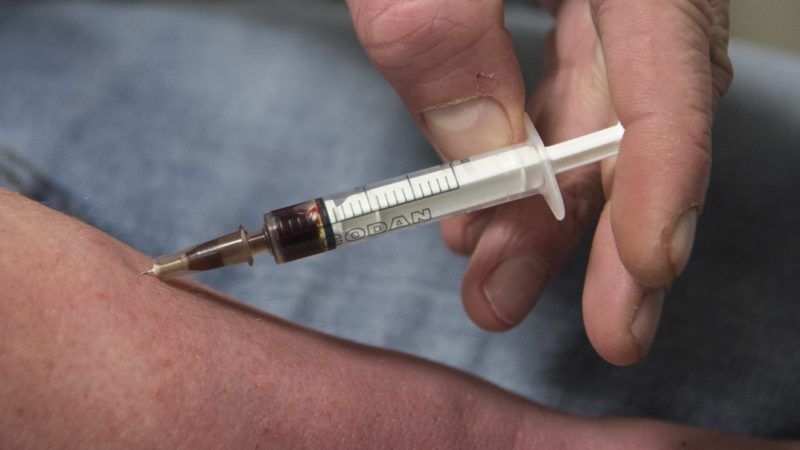Philadelphia Safe Injection Site Opening Delayed
Blame angry neighbors, not the feds.

A nation-first site for users to safely inject drugs will not be opening in Philadelphia this week after all.
A U.S. attorney from the Justice Department is taking the project to court to stop them, but that's not what caused the delay. The roadblock is an angry response from people in the neighborhood.
Officials and activists with the non-profit Safehouse have been working on plans to open a privately operated, donor-funded safe injection facility (SIF). The place would give drug addicts a place off the street where they can inject under the watch of trained medical professionals who could respond to overdoses.
They've been fighting the U.S. Department of Justice, which thinks this harm reduction tool is against federal law and encourages drug use. The feds lost the first round of the fight when a federal judge ruled against them last October.
But last week, when Safehouse announced its first site to open, it was not in the Kensington neighborhood, as everybody thought it would be, but in South Philadelphia, a few miles away. Some residents felt blindsided.
Kensington is infamous for open use in homeless encampments—and for high rates of overdoses and deaths. South Philadelphia has its share of drug deaths, too. But the announcement nevertheless sparked outrage, prompting organizers to pull back and "regroup" to decide the best course of action. The lease they had arranged in South Philadelphia has been cancelled.
Christopher Moraff, who has been doing street-level coverage of Philadelphia's drug abuse crisis for years, reports in Filter that while Kensington was planned for an initial SIF, Safehouse worried that it would not be able to immediately meet demand; meanwhile, the owner of the building they were intending to lease got cold feet and pulled out. Safehouse Vice President Ronda Goldfein told Moraff that they picked South Philadelphia as another location because that part of the city has the second-highest number of drug fatalities.
A big difference in drug use patterns made people more comfortable with having a facility in Kensington than in South Philadelphia. Despite the overdose statistics, Moraff explains, most of the drug abuse in South Philadelphia takes place behind closed doors:
In contrast to Kensington, which is known for its open-air drug markets, drugs and drug paraphernalia are not visible on the streets of South Philly. Most dealers conduct their business by phone and sometimes make house calls. The population is predominantly Italian American, with a tradition of children continuing to live in their parents' homes into adulthood.
The majority of fatal overdoses here happen inside the home, with no one present to intervene. Compare that to Kensington, where injection drug use is often conducted in the open, and frequently in groups. Kensington's proximity to Prevention Point Philadelphia also provides ready access to naloxone and sterile syringes.
No comparable program serves people who use drugs in lower South Philly. Few of the injecting drug users I've spoken with here carry naloxone, and for most, the only way to obtain sterile syringes is to purchase them from a pharmacy, making access less likely.
Many South Philly residents fear that opening the facility there will draw in Kensington users or even cause a surge in open outdoor use even though the point of a SIF is to serve as an alternative to this behavior.
It's an unfortunate setback for Safehouse. But with luck they'll find a path forward and we can start seeing whether SIFs can help reduce overdose deaths, help reduce the spread of diseases, and help connect addicts to resources to assist them.


Show Comments (77)